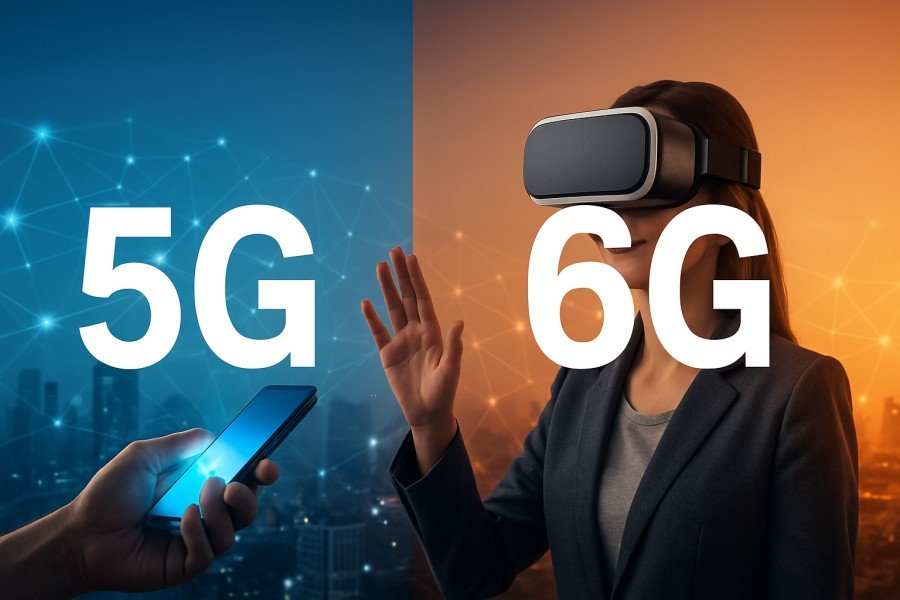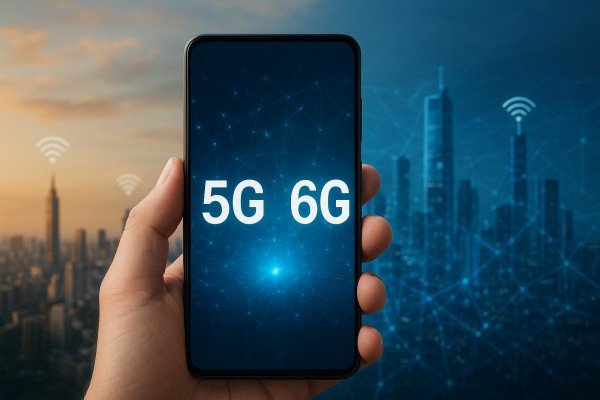In the past decade, the evolution of wireless technology has been nothing short of revolutionary. The introduction of 5G technology promised lightning-fast internet speeds, reduced latency, and an entirely new ecosystem for smart devices. But as we step further into 2025, discussions are already shifting toward 6G networks, which are expected to redefine the way humans and machines interact with the digital world. The comparison of 5G vs 6G is not just about faster speeds it is about building an interconnected future where innovation meets everyday life.
Understanding the Shift from 4G to 5G
Before we dive into the differences between 5G and 6G, it’s important to remember what 5G achieved compared to its predecessor. 4G networks brought us seamless video streaming, app-driven lifestyles, and mobile gaming. However, 5G went beyond that by offering enhanced reliability for smart homes, autonomous vehicles, and real-time communication. It became the backbone for technologies like augmented reality and advanced Internet of Things (IoT) devices.
5G was not just an upgrade in speed it was a framework for industries to innovate. For instance, healthcare adopted remote surgeries powered by ultra-low latency, while businesses explored smart manufacturing and AI-driven automation.
What Makes 6G Different
If 5G was revolutionary, 6G networks are predicted to be evolutionary. With research already underway in countries like Japan, South Korea, and the United States, 6G is expected to operate at terahertz frequencies, potentially delivering speeds up to 100 times faster than 5G. Imagine downloading an entire high-definition movie in less than a second or enabling holographic communication as casually as a phone call.
6G is not only about speed. It aims to blend physical and digital realities through ultra-low latency and massive device connectivity. Smart cities will function on real-time data, self-driving cars will interact without human intervention, and remote work will extend into immersive 3D environments. For everyday users, this means a digital experience that is instantaneous and deeply interactive.
The Impact on Businesses and Technology
The leap to 6G will drastically influence industries that already rely on artificial intelligence and machine learning. Businesses will see faster decision-making processes due to real-time analytics and automation. Cloud computing will transform into edge computing at scale, reducing dependency on centralized servers and making services more secure and efficient.
Startups and entrepreneurs, especially in the technology sector, will also find opportunities to innovate. Just as influencers and digital creators such as Tech Burner tapped into new platforms enabled by 4G and 5G, the 6G era will open possibilities for immersive content creation and entirely new business models.

How Consumers Will Experience the Change
For the average person, the shift from 5G to 6G will be as noticeable as moving from dial-up to broadband in the early 2000s. Online gaming will be hyper-realistic, smart appliances will respond instantly, and healthcare monitoring will become continuous and more precise. In entertainment, concerts and sports events may be experienced in virtual reality with full sensory interaction.
Interestingly, digital personalities like Manoj Dey, who built strong online communities, highlight how connectivity shapes modern careers. With 6G, the scale and reach of such digital ecosystems will only expand further, giving individuals tools to connect with audiences in more meaningful ways.
Challenges Ahead
Despite the excitement, the move toward 6G comes with challenges. Infrastructure upgrades will require massive investment, and global adoption will not be immediate. There are also concerns about cybersecurity and data privacy as more devices become interconnected. Governments, telecom operators, and technology companies will need to collaborate to create secure frameworks while ensuring affordability for users.
Environmental impact is another consideration. The energy required for high-frequency operations could increase carbon footprints, demanding sustainable solutions in hardware and software.
Conclusion
The debate of 5G vs 6G is more than a technical comparison it represents a shift in how we envision the future of connectivity. While 5G laid the foundation for smart living and industrial automation, 6G promises a leap into a world where digital and physical realities merge seamlessly. For both businesses and consumers, the coming decade will mark a turning point, making connectivity not just faster but smarter and more immersive.
As the world prepares for this transformation, one thing is clear: connectivity is no longer just a utility. It is the driving force behind innovation, creativity, and human progress.








